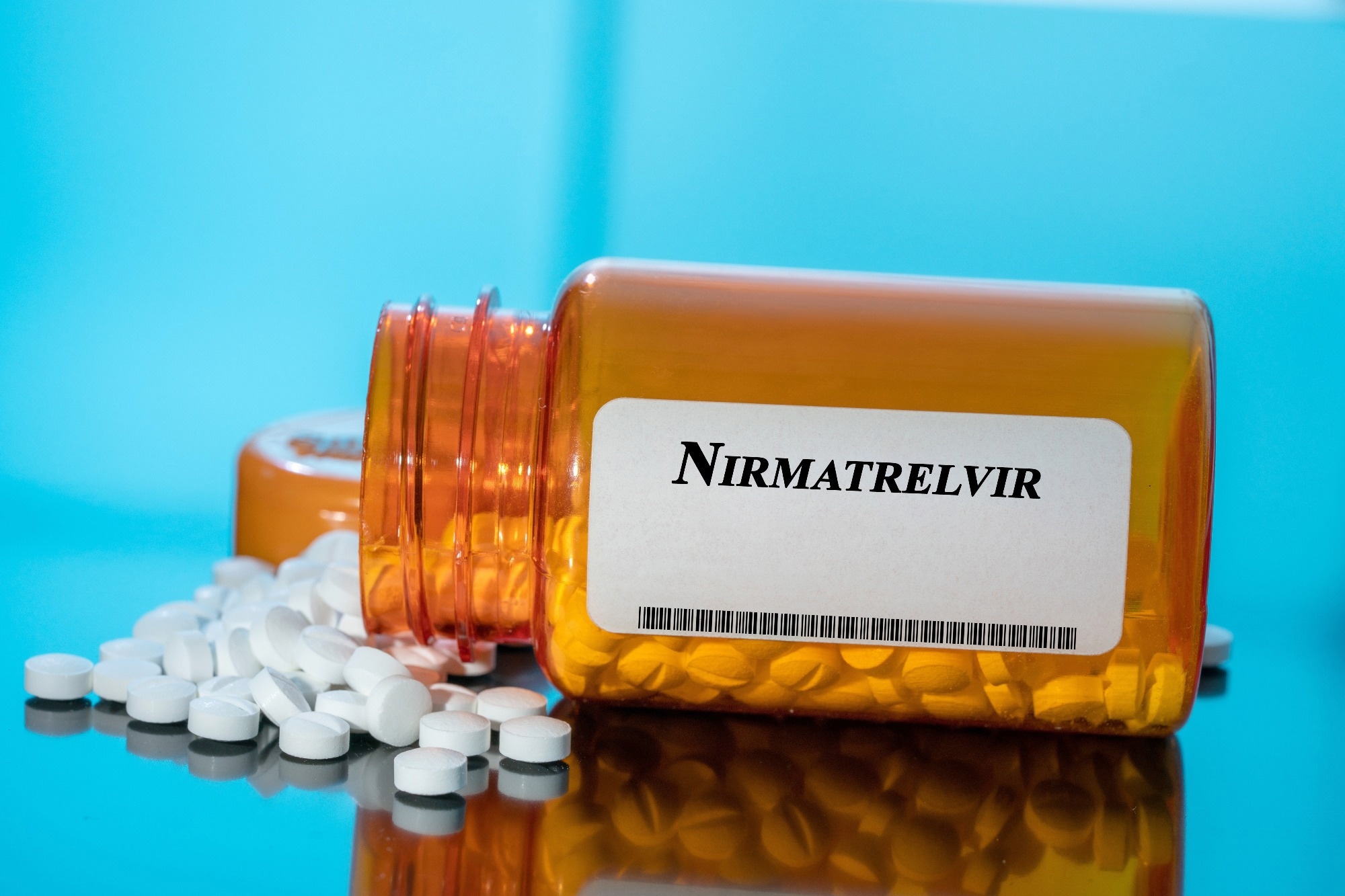They found NMV-r to be effective in precluding patient hospitalization due to infection with the given variants, supporting the continued use of the drug.
 Study: Real-world use of nirmatrelvir-ritonavir in COVID-19 outpatients during BQ.1, BQ.1.1., and XBB.1.5 predominant omicron variants in three U.S. health systems: a retrospective cohort study. Image Credit: luchschenF/Shutterstock.com
Study: Real-world use of nirmatrelvir-ritonavir in COVID-19 outpatients during BQ.1, BQ.1.1., and XBB.1.5 predominant omicron variants in three U.S. health systems: a retrospective cohort study. Image Credit: luchschenF/Shutterstock.com
Background
Nirmatrelvir, an oral protease inhibitor targeting the main viral protease (MPRO) of SARS-CoV-2, showed promising results in previous studies, indicating an 89% reduction in the risk of progression for predominantly unvaccinated outpatient individuals with SARS-CoV-2 infection.
In observational studies, NMV-r has been consistently effective against recent SARS-CoV-2 Omicron variants, including BQ.1.1 and XBB.1.5, which exhibit greater immune evasion capabilities.
However, its recent full approval by regulatory bodies warrants its continued assessment against the newer variants, especially considering the anticipated rise in NMV-r prescriptions for high-risk outpatients.
Evaluating NMV-r effectiveness in real-world settings is hindered by over 80% missingness of SARS-CoV-2 home test results in health system records, compounded by patient trends in minimizing home testing and delaying treatment initiation, introducing bias in interpreting effectiveness within cohorts with untreated controls.
Addressing these challenges, researchers in the present study used real-world data from three health systems in the USA to assess NMV-r effectiveness exclusively in NMV-r-treated patients.
They compared the NMV-r effectiveness during the BQ.1/BQ.1.1/XBB.1.5-predominant phase to a previous Omicron BA.2/BA.2.12.1/BA.4/BA.5-predominant phase.
About the study
The present collaborative observational cohort study used data from three health systems, namely UCHealth, DH, and IH, along with statewide vaccination and mortality records. Patients and clinicians decided on antiviral treatment, with NMV-r preferred within five days of symptom onset.
Two phases were defined based on virus strain data: the first (BA.2/BA.2.12.1/BA.4/BA.5 variant-predominant) from April to November 2022, and the second (BQ.1/BQ.1.1/XBB.1.5 variant-predominant) from November 2022 to March 2023.
Exclusion criteria were alternative antiviral treatments, no NMV-r orders, and hospital-based NMV-r treatments. The final cohort, after adjustments and exclusions, comprised 37,136 patients.
A secondary analysis included 23,634 patients for evaluating NMV-r effectiveness during the BQ.1/BQ.1.1/XBB.1.5 variant-predominant phase, distinguishing between NMV-r treated and untreated patients.
While the primary outcome was hospitalization (all-cause) in 28 days following the index date, the secondary outcomes included COVID-19-related hospitalization (defined by specific criteria) and 28-day all-cause emergency department (ED) visits.
Descriptive statistics were presented for 28-day all-cause mortality due to low proportions and event rates. Exploratory outcomes in the hospitalized subset encompassed hospital length of stay, odds of intensive care unit (ICU) transfer, disease severity, and in-hospital mortality.
The statistical analysis employed Firth's logistic regression with segmented linear modeling, sensitivity analyses, subgroup assessments, and inverse probability weighting.
Results and discussion
In the primary NMV-r treated cohort, 71% of participants lacked observed SARS-CoV-2 test dates. Baseline characteristics were comparable in the two Omicron phases.
The findings suggest that the odds of 28-day hospitalization in NMV-r-treated patients were similar (within pre-specified non-inferiority parameters) during the BQ.1/BQ.1.1/XBB.1.5 variant-predominant phase, as compared to the earlier BA.2/BA.2.12.1/BA.4/BA.5 phase.
In the primary cohort, 80.5% of hospitalizations were COVID-related. Similar trends were observed for 28-day ED visits. Mortality rates and respiratory support levels were low and comparable between phases (ICU admission rates 13.1% vs. 12.8%, mean hospital length of stay 3.8 vs. 3.7 days).
The phase effect was consistent across defined subgroups. Subgroup and sensitivity analyses supported the primary analysis findings.
In the secondary cohort during the BQ.1/BQ.1.1/XBB.1.5 predominant phase, NMV-r treatment significantly reduced the odds of 28-day hospitalization compared to untreated patients, as determined by consistently low adjusted odds ratios.
The study limitations include potential residual and unmeasured confounding, underrepresentation of non-Hispanic Blacks, lack of reliable symptom onset data, potential misclassification of treatment and outcomes due to reliance on EHRs, and high SARS-CoV-2 test result missingness.
Conclusion
In conclusion, the findings of this novel study, derived from three health systems in Colorado and Utah, indicate comparable hospitalization odds for NMV-r-treated patients between BQ.1/BQ.1.1/XBB.1.5 and BA.2/BA.2.12.1/BA.4/BA.5 predominant phases.
Additionally, NMV-r exhibits reduced odds of hospitalization compared to untreated controls in a secondary cohort, predominantly infected with BQ.1/BQ.1.1/XBB.1.5, suggesting sustained efficacy of NMV-r against recent Omicron variants.
The findings strengthen the existing international recommendations by highlighting the substantial benefits of NMV-r, particularly for patients at high risk of hospitalization or death, even among those who have received three or more vaccine doses.